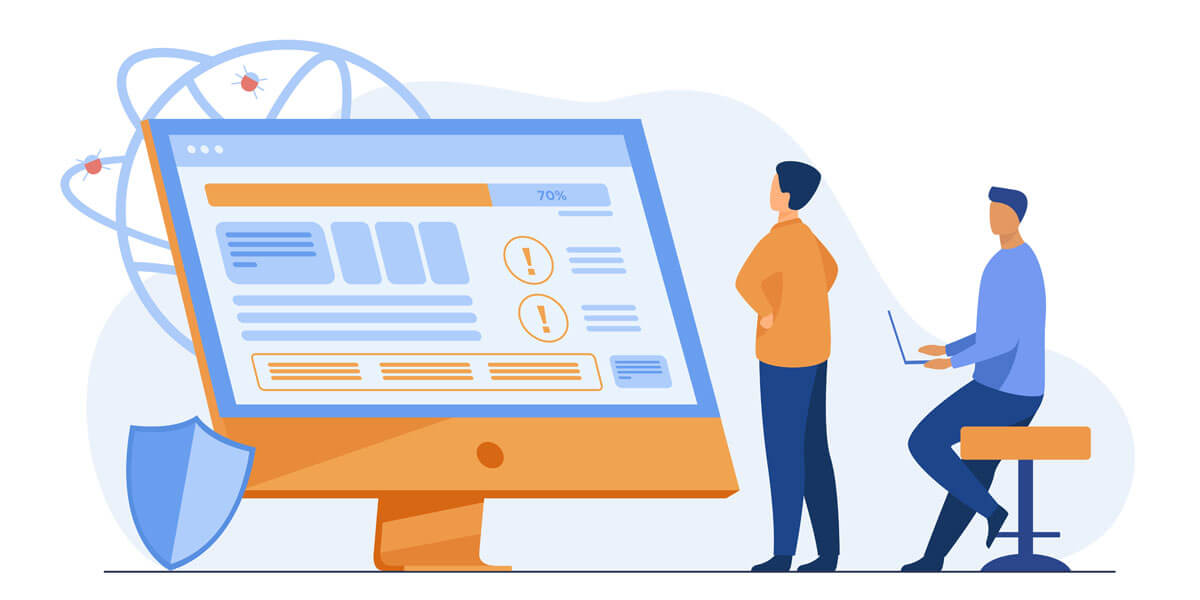Software testing is an action to check whether the real outcomes coordinate the normal outcomes and to guarantee that the product system is sans defect. It includes the execution of a product part or system segment to assess at least one properties of intrigue. Software testing additionally assists with distinguishing blunders, holes, or missing prerequisites in as opposed to the real necessities.
Software testing is a procedure, to assess the usefulness of a product application with a goal to discover whether the created software met the predefined prerequisites or not and to
recognize the imperfections to guarantee that the item is without deformity so as to deliver the quality item.
What is Software Testing?
Software testing can be expressed as the way toward checking and approving that a product or application is without bug, meets the specialized prerequisites as guided by it’s structure and
improvement and meets the client necessities viably and productively with taking care of all the uncommon and limit cases.
The procedure of software testing points not just at discovering flaws in the current software yet in addition at discovering measures to improve the product as far as effectiveness, precision
and ease of use. It predominantly targets estimating particular, usefulness and execution of a product program or application.
Software testing can be partitioned into two stages:
1. Verification: it alludes to the arrangement of errands that guarantee that product accurately actualizes a particular capacity.
2. Validation: it alludes to an alternate arrangement of assignments that guarantee that the product that has been constructed is discernible to client necessities.
What is Software Testing Life Cycle (STLC)
Software is an element. Much the same as creating software includes a succession of steps, testing likewise has steps which ought to be executed in a clear grouping. This wonder of executing the testing exercises in a methodical and arranged manner is called trying life cycle.
Software Testing Life Cycle alludes to a testing procedure which has explicit strides to be executed in a distinct succession to guarantee that the quality objectives have been met. In the STLC procedure, every movement is done in an arranged and precise manner. Each stage has various objectives and expectations. Various associations have various stages in STLC; be that as it may, the premise continues as before.
Periods of STLC
There are various stages in STLC which are given underneath. The testing exercises start from the Requirements examination stage and experiences all the stages individually before finishing with the Test cycle conclusion stage.
There are 6 STLC Phases in the STLC Life-cycle:
• The passage measures must be satisfied before each stage can begin
• The leave models ought to be satisfied before leaving a stage
• Every stage has at least one expectations that are delivered toward the finish of the stage
• The stages are executed in a succession
The 6 STLC Phases are given beneath:
1. Requirement investigation
2. Test Planning
3. Test case improvement
4. Environment Setup
5. Test Execution
6. Test Cycle Closure
Fundamental Testing Types
A degree of software testing is where each unit or segment of a product/system is tried. The essential objective of system testing is to assess the system’s consistence with the predefined needs. In Software Engineering, four primary degrees of testing are Unit Testing, Integration Testing, System Testing and Acceptance Testing.
- Functional Testing – Functional testing checks that highlights work as indicated by prerequisites, distinguishing all regions where execution doesn’t meet anticipated outcomes. The most well-known utilitarian testing systems are discovery trying strategies—wherein the analyzer doesn’t have to audit the inward source code, yet approves usefulness by testing different information mixes.
- Non Functional Testing – Non-useful testing performs minds more extensive quality concerns, checking all non-utilitarian parts of the product application. Non-useful testing can here and there require greater innovativeness and specialized skill, since you are trying what the client expects for a general quality encounter—not X input prompts Y yield.
- Manual Testing – Manual testing is the way toward testing software by hand to get familiar with it, to discover what is and isn’t working. This generally incorporates checking all the highlights determined in necessities archives, yet regularly additionally incorporates the analyzers attempting the product with the viewpoint of their end client’s at the top of the priority list.
- Mechanized Testing – Automation testing is the way toward testing the product utilizing a mechanization instrument to discover the imperfections. In this procedure, analyzers execute the test contents and produce the test outcomes consequently by utilizing mechanization apparatuses.
- System testing – System testing is performed on a total, coordinated system. It permits checking system’s consistence according to the necessities. It tests the general connection of segments. It includes load, execution, unwavering quality and security testing.
System testing is frequently the last test to confirm that the system meets the details. It assesses both useful and non-utilitarian requirement for the testing.



